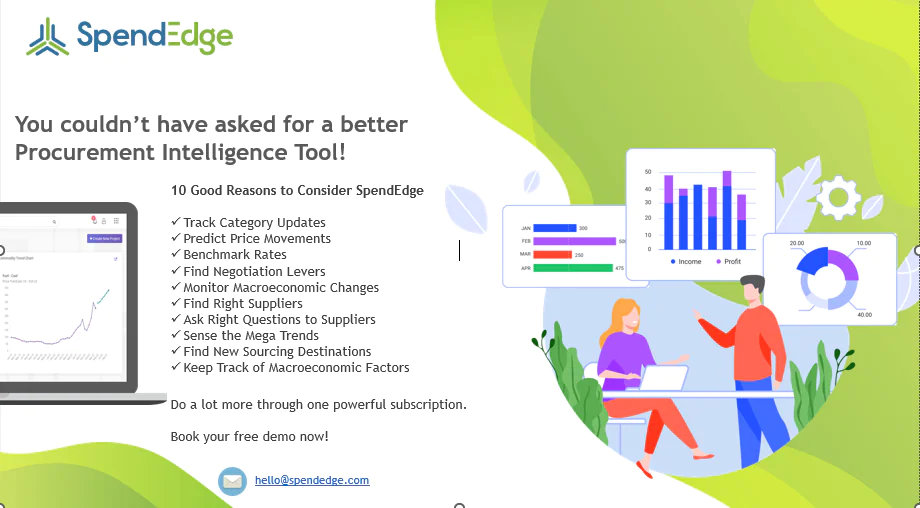Key Takeaways
- Integral Role of Packaging: Packaging is crucial in supply chain management, impacting order processing, production, procurement, and distribution by ensuring product safety, integrity, and efficient delivery in both B2B and B2C transactions.
- Optimization and Sustainability: Effective optimization of packaging involves choosing the right-sized packaging, using lightweight and durable materials, and integrating sustainable practices to reduce waste, shipping costs, and environmental impact.
- Technological Integration: Advanced packaging solutions, such as smart packaging and RFID technology, enhance tracking and logistics, improving visibility and minimizing errors throughout the supply chain.
- Strategic Asset: Recognizing packaging as a strategic asset allows companies to streamline manufacturing and production, enhance quality control, and improve order management and sales order processing, leading to cost savings and sustainable growth.
Importance of Product Packaging
Packaging is an important part of every product. Packaging protects, contains, unitizes, and sells products at the “first moment of truth” on the store shelf. It can significantly impact a brand’s sales, operating performance, environmental impact, and cost but can also create significant value. Have you ever been enticed into buying a product because of its packaging? Packaging is not only an important part of brand-building – a moving billboard for brands whose goods are contained inside each package; it also enables more efficient and cost-effective transportation, warehousing, and picking. Therefore, packaging is an important cog in the overall supply chain wheel.
What is Supply Chain Management?
Supply chain management is the process of facilitating the movement of goods and services. This includes taking raw materials or goods and turning them into finished products. Supply chain activities encompass product development, sourcing, manufacturing, logistics, and tracking.
Optimized supply chain activities should manage product packaging efficiently, affordably, and with little to no error. A streamlined supply chain can minimize businesses’ costs and boost productivity in the production cycle, while a poor supply chain process can negatively impact ROI and customer satisfaction.
Connecting the dots… Packaging and its Critical Role in Supply Chain Management
In the fast-paced world of modern business, the success of a company hinges not only on the quality of its products but also on its ability to efficiently manage its supply chain. At the heart of this intricate process lies a crucial element often overlooked: packaging.
Packaging serves as much more than a mere container for products; it plays a multifunctional role throughout the supply chain. From protecting goods during transportation to conveying vital information to consumers, the functions of packaging are diverse and indispensable.
First and foremost, packaging ensures the safety and integrity of products, safeguarding them from damage, spoilage, or contamination throughout the distribution process. Additionally, it serves as a vehicle for branding and marketing, conveying a company’s identity and communicating essential product information to consumers.
By recognizing packaging as a strategic asset rather than a logistical afterthought, companies can unlock a wealth of opportunities to achieve efficiency gains, cost savings, and sustainable growth. Proactive packaging management is essential for staying ahead in an ever-evolving business landscape.
Effective packaging plays a pivotal role in various aspects of supply chain management, including order processing, production, procurement, and distribution. It impacts both B2B and B2C transactions by ensuring that products reach their destination in optimal condition.
In product development, thoughtful packaging design can significantly influence customer perceptions and purchasing decisions. Additionally, during sourcing and manufacturing, selecting the right packaging materials and designs can streamline the procurement workflow and reduce the need for duplicate supplier research.
Packaging is integral to manufacturing and production processes, affecting production planning, scheduling, and quality control. Efficient packaging solutions can enhance order management and sales order processing, ensuring timely delivery and customer satisfaction.
Moreover, in the realms of logistics and tracking, well-designed packaging facilitates easier handling and accurate monitoring throughout the supply chain. By integrating advanced technologies like RFID and tracking technologies, companies can improve purchase order processing and maintain better control over their procurement and distribution networks.
Ultimately, recognizing the strategic importance of packaging within the supply chain framework allows companies to optimize their operations, reduce costs, and achieve sustainable growth. This holistic approach to packaging ensures that every aspect, from production to distribution, is aligned with the company’s overall business objectives.
General Flow of Supply Chain Management
-
Procurement
The initial stage involves sourcing and acquiring raw materials for packaging from vendors, using flowcharts to streamline the procurement workflow.
-
Material Management
Material management ensures the availability of essential components for manufacturing and production.
-
Manufacturing
This allocates production orders and schedules manufacturing execution within the supply chain, with flow charts to reduce lead times.
-
Order Management
It involves validating information for orders, improving data management to minimize errors.
-
Distribution
The distribution process coordinates orders and inventory management to deliver products to customers, optimizing processes to reduce errors.
The Packaging Process in Supply Chain Management
Effective supply chain management entails meticulous attention to every step of the packaging process. From design and manufacturing to distribution and disposal, each phase plays a critical role in ensuring seamless operations and customer satisfaction. Optimized supply chain management in packaging can increase a business’s cash flow, maximize resources and time in the production cycle, improve the overall efficiency of the process, and make the operation smoother from the procurement stage to the time the products reach the end-user.
In manufacturing, the packaging process involves not only selecting the appropriate materials but also optimizing packaging designs for efficiency and sustainability. By implementing lean practices and incorporating eco-friendly materials, companies can streamline their packaging operations while reducing the environmental impact.
Product packaging has many functions that address specific challenges in the supply chain, including the following:
- Protective function: The packaging must safeguard the goods from external factors and ensure that products survive handling during transportation.
- Storage function: Since the products can travel and be contained in multiple locations before reaching the final destination, the packaging should use materials that allow convenient storage while meeting storage requirements.
- Transport function: Proper and efficient packaging design enables easy handling, stowing, and stacking during transportation in a way that maximizes the space available.
- Tertiary function: This refers to the extra protective carrier that safeguards the secondary and primary packaging of the goods. It also has an organizational purpose, namely grouping individual products into one box. It’s better to use eco-friendly materials for this additional packaging, especially since more customers expect businesses to be more environmentally conscious and responsible.
Below are some of the factors related to packaging, which contribute to efficient supply chain management:
- Weight of the packaging: Weight and mass pose significant challenges to the costs of logistics. That is why it’s more strategic to develop protective primary, secondary, and tertiary packaging that adequately protects the item, doesn’t take up too much space and weight, and is easy to handle and transport. A well-engineered packaging structure makes it easier for employees to move the products around, prioritizes warehouse safety, and protects your brand’s inventory.
- Sustainability: Consumers are becoming increasingly mindful of their purchases for the benefit of the environment. Packaging that reduces the materials used and is reusable can minimize costs and cut the lead time in procurement.
- Wastage prevention: Eliminating any needless movement to fulfill an operation, such as piling products and reloading, can enhance operations. The recycling or reusing of packaging materials sent back by the customer or as leftovers from previous steps can be utilized for the next shipment, cutting costs and wastage significantly.
- Simplified packaging solutions: Some businesses can use the same size and packaging format for all their products, eliminating the complexity of their packaging process. However, studying the best packaging that balances the complexity and efficiency of your packaging process can reduce space and waiting times significantly in supply chain management.
Why Choose SpendEdge?

Conclusion
Packaging plays a central role in the complex ecosystem of supply chain management. From protecting products to promoting brand identity and sustainability, the functions of packaging are diverse and far-reaching. By prioritizing packaging optimization and embracing innovative solutions, companies can enhance efficiency, reduce costs, and drive long-term success in today’s competitive marketplace. As leaders in the industry, it is imperative to recognize the critical role of packaging and leverage it as a strategic asset in supply chain management. With a greater understanding of the importance of packaging in the supply chain, it is crucial to develop a functional packaging design that considers the production, logistics, and marketing of your products, as well as the expectations and needs of end users.




